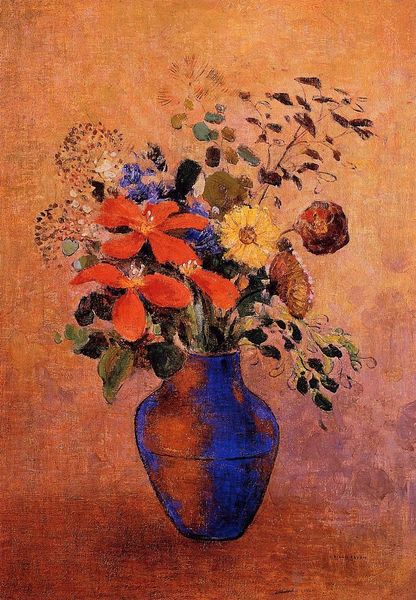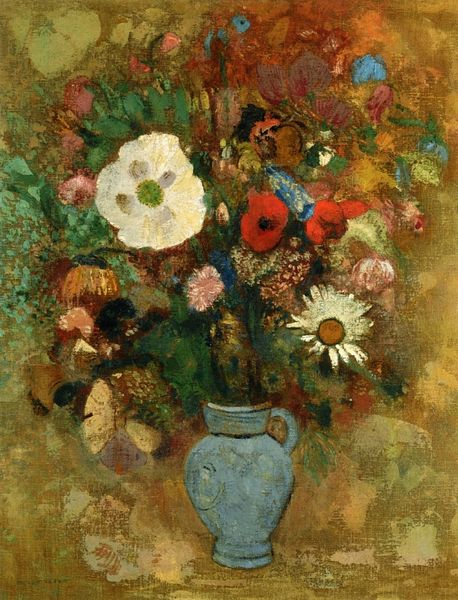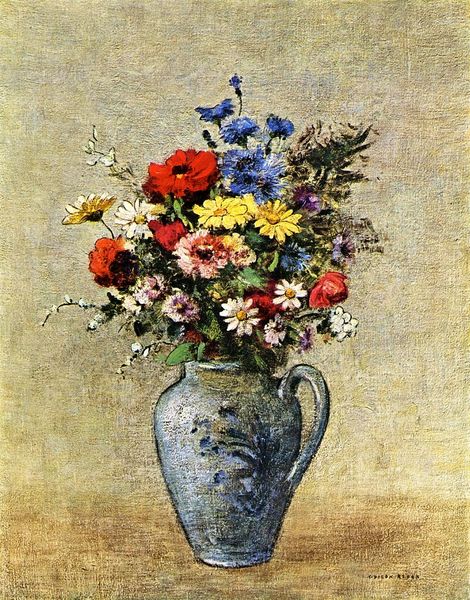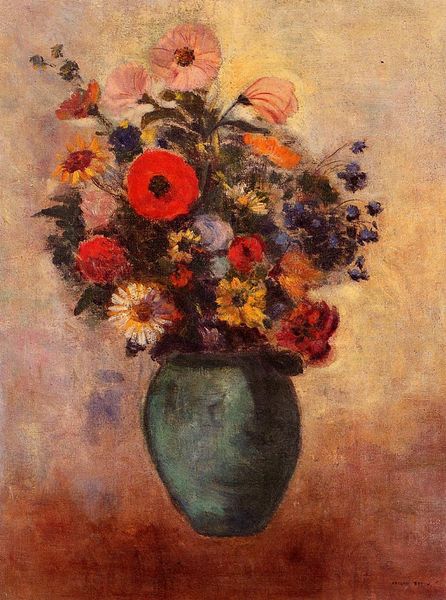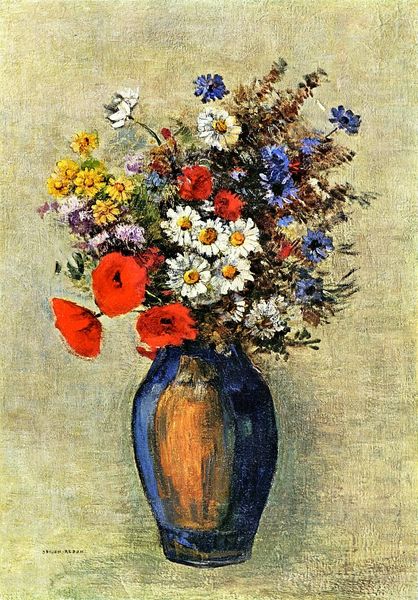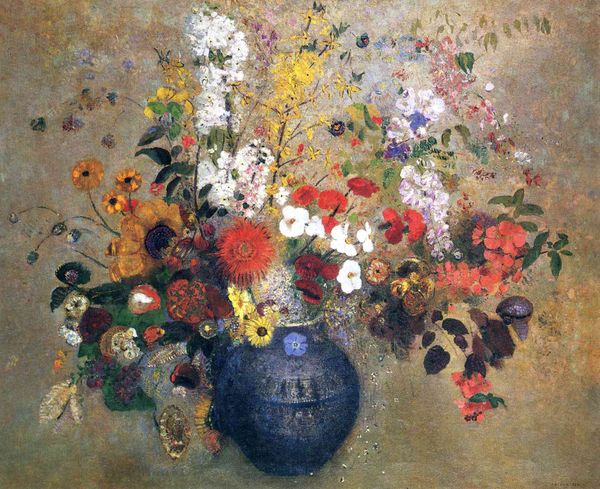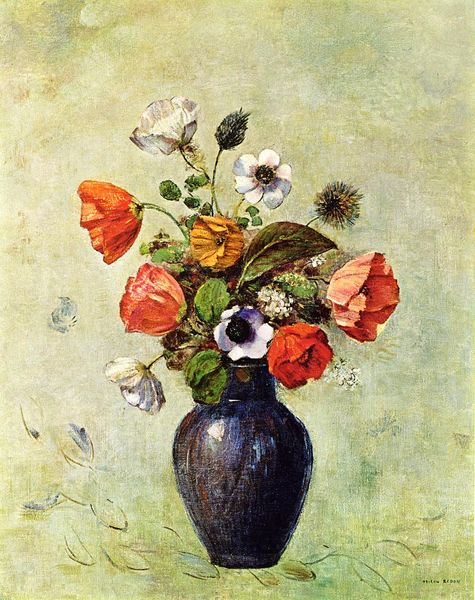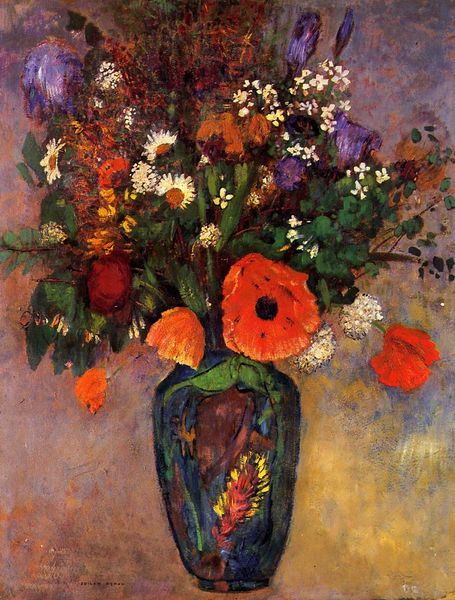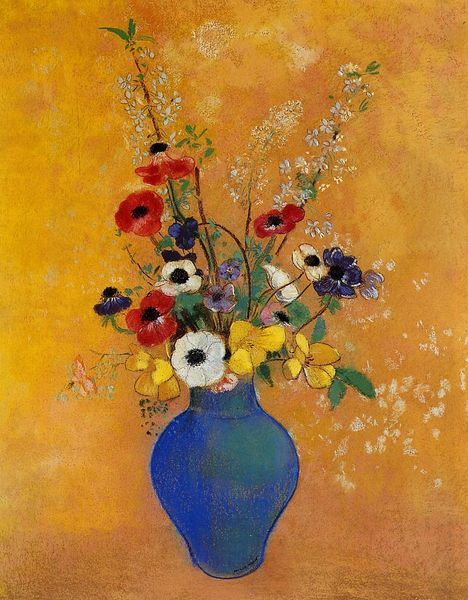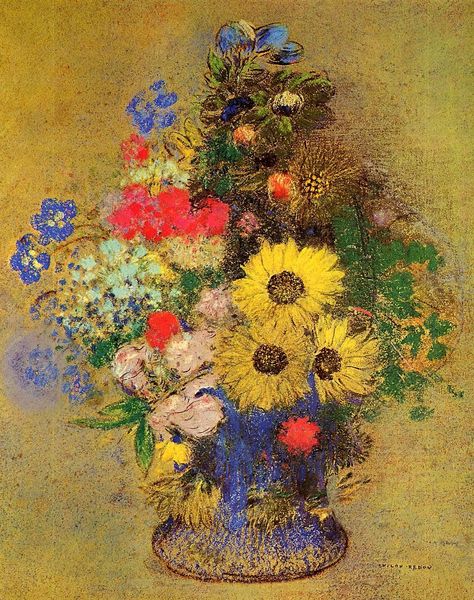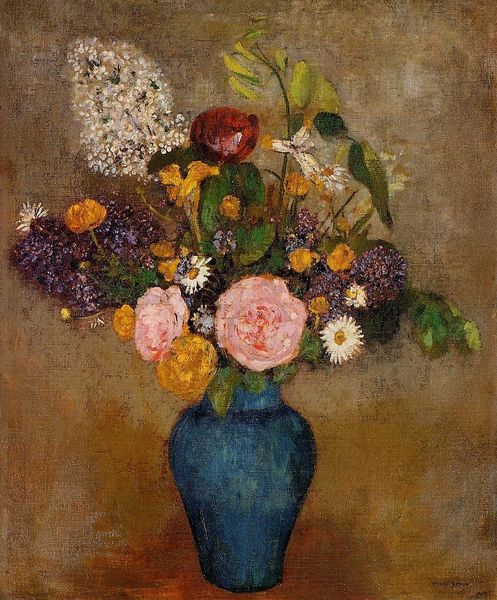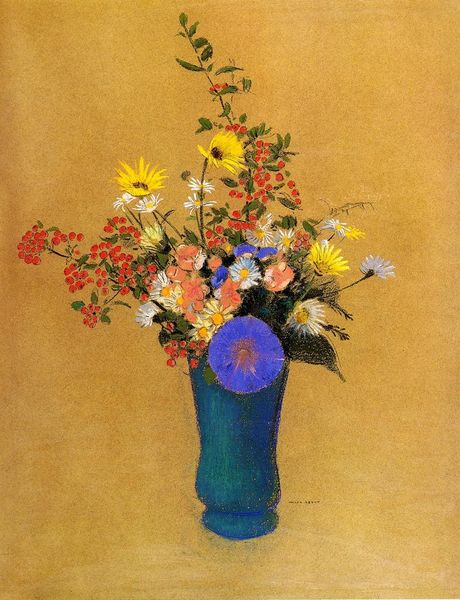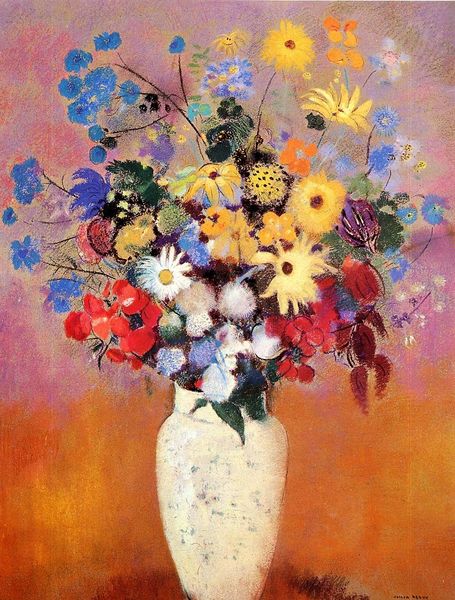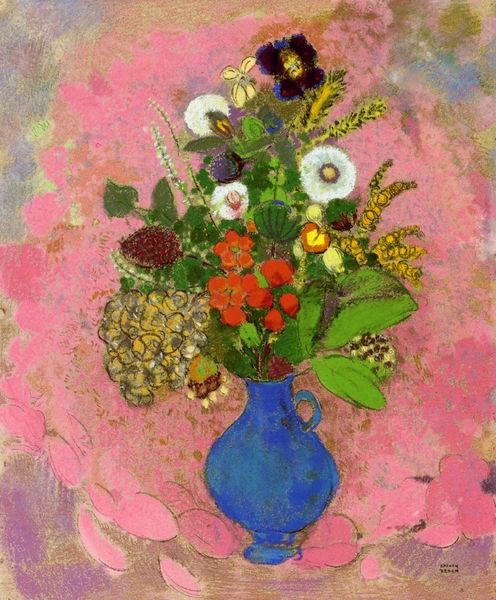
Dimensions: 73.03 x 53.98 cm
Copyright: Public domain
Curator: This is "Bouquet of Flowers in a Green Vase," painted by Odilon Redon in 1907. It's currently housed at the Wadsworth Atheneum. Editor: My first impression is that this isn’t just a pretty still life. The impasto technique gives it an almost turbulent energy, the flowers feel less delicate and more like assertive forms. Curator: Redon was working at a time when ideas around societal beauty standards were rapidly changing. So this subversion is apt. While the Impressionists often focused on exterior appearances, Redon delved into subjective experience, influenced by Symbolism. These floral works of his, especially late in his career, can be read as a deliberate attempt to disrupt traditional expectations. Editor: The composition, though, does adhere to some classical principles. The vase anchors the work, providing a stable base from which the bouquet explodes. The varied sizes and colors of the blossoms create a pleasing visual rhythm, guiding the eye around the canvas. Curator: Exactly, but within that structure is an incredible array of symbolic gestures. Floral imagery has historically been loaded, particularly in terms of femininity. Consider the overt symbolism related to women being perceived like decorative objects or commodities in 19th-century domestic life, something Redon himself would likely be commenting on. Editor: It’s the handling of color that really fascinates me. The juxtaposition of the vibrant reds and yellows against the muted greens and browns creates a push-and-pull effect. Curator: And there's a potent duality—growth and decay, reality and illusion. Redon had a known engagement with esoteric knowledge and the exploration of dreams. His artistic project became a way of making visible the unseen. It’s a way to acknowledge how individuals are impacted by the social environments of their time. Editor: Thinking about that dynamic interplay you describe, the textural impasto emphasizes a kind of raw materiality, further removing it from ideal notions. It insists on the physical presence of the paint, and the artistic gesture. Curator: Ultimately, in looking at art like this, we not only question assumptions about beauty but start a larger critical discourse surrounding the complex interactions between art, the artist, and society. Editor: Absolutely. Looking at the basic elements in a work also underscores an individual expression and an understanding of perception. Thanks for shedding new light on this bouquet.
Comments
No comments
Be the first to comment and join the conversation on the ultimate creative platform.
